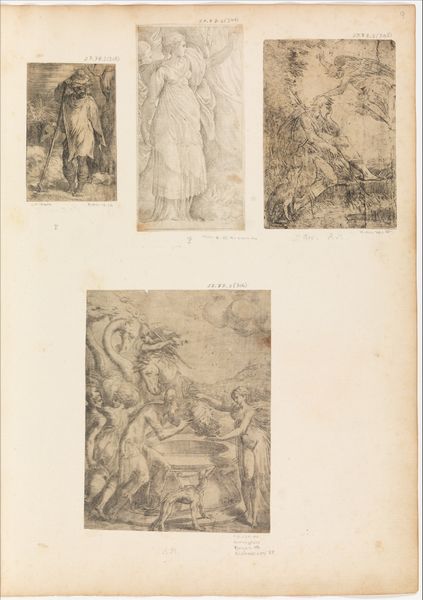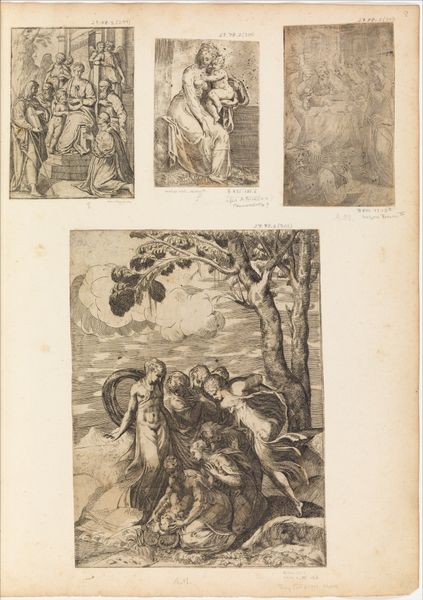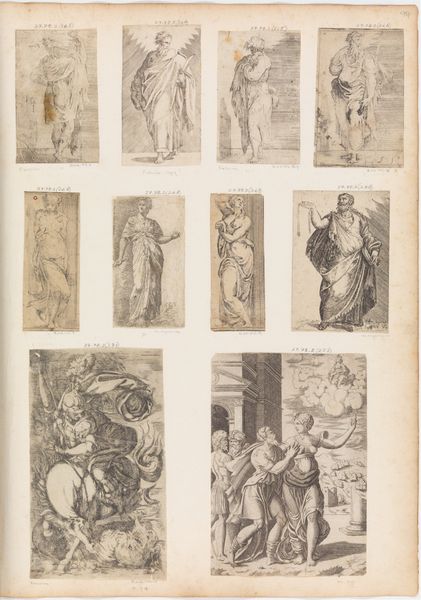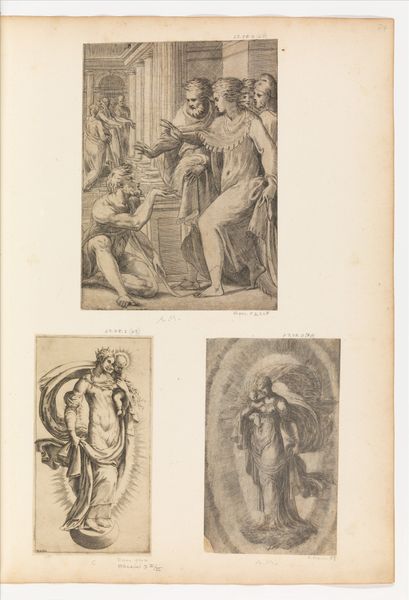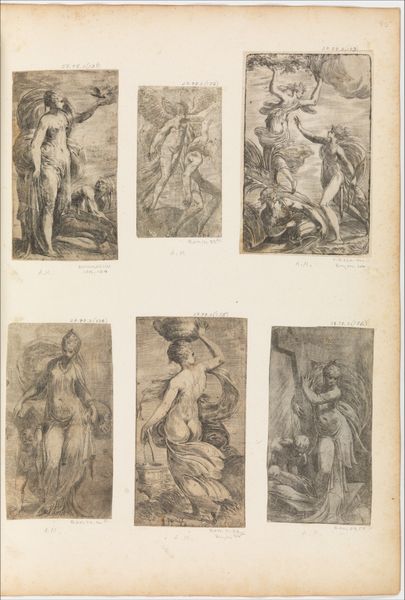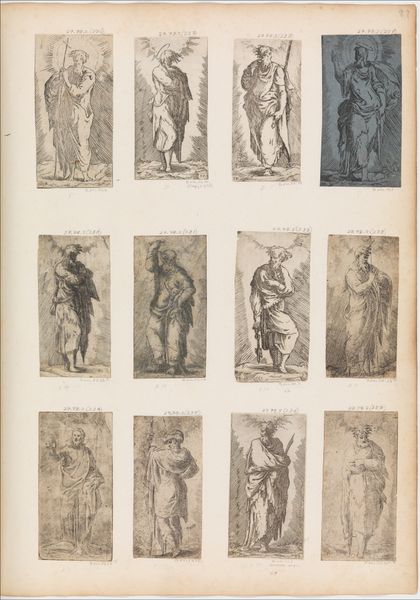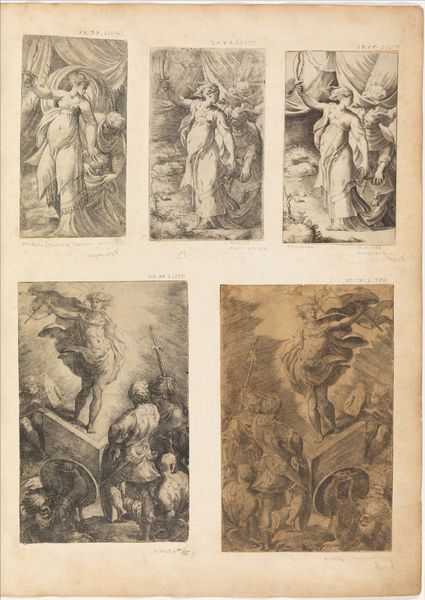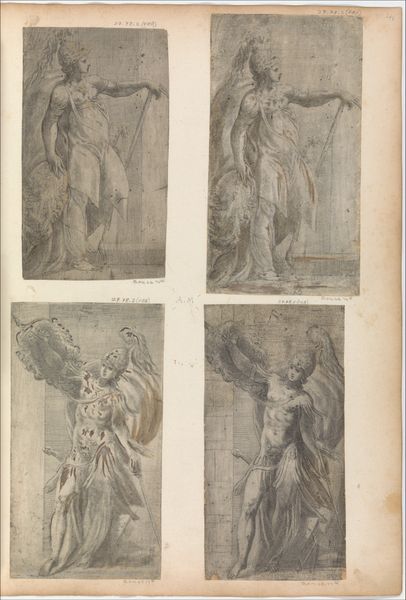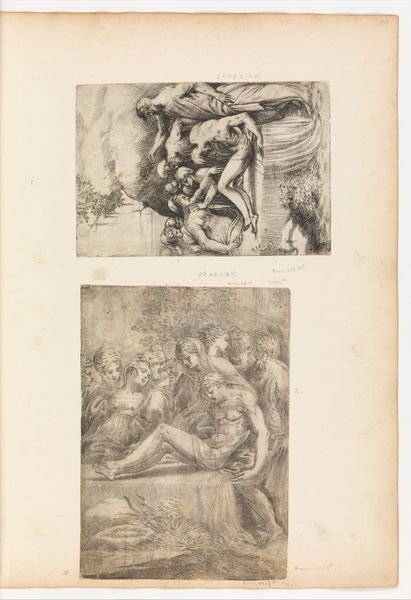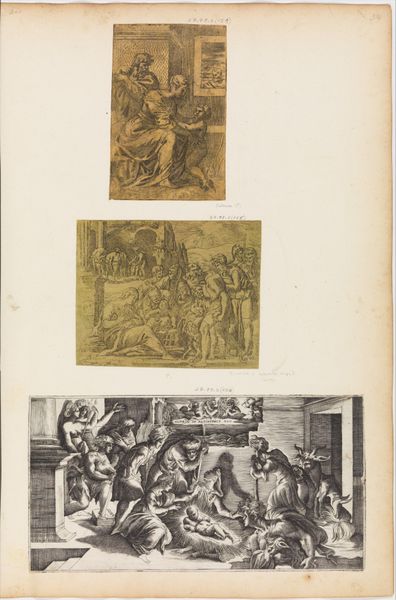
drawing, print, etching, intaglio
#
drawing
#
narrative-art
# print
#
etching
#
intaglio
#
mannerism
#
figuration
#
history-painting
#
italian-renaissance
Copyright: Public Domain
Curator: This work before us, attributed to Parmigianino and dating from 1503 to 1540, is titled "Annunciation." It's an etching, an intaglio print, offering us a window into the artistic practices of the Italian Renaissance. Editor: The first thing that strikes me is the almost dreamlike quality, despite the firmness of the etched lines. It has the quality of studies, almost like contact sheets that showcase various poses from live sessions and character concepts, which makes for an extremely insightful overview on this major religious motif. Curator: Precisely. Its creation falls within the Mannerist movement, a period known for its sophisticated elegance and stylized representation. Etchings like these served multiple purposes; not only were they works of art in themselves, but they were easily portable and disseminated artistic ideas across geographical boundaries, building Parmigianino's reputation. Editor: How do these specific portrayals diverge from established visual idioms? Curator: In Renaissance depictions of the Annunciation, the angel Gabriel typically approaches Mary in a staged architectural setting. Here, while religious figures dominate, they appear sketch-like; also, the depiction includes seemingly unrelated portraits, calling attention to form over theological concern. Editor: This piece highlights an element of negotiation, revealing the patriarchal origins that have dominated much of its historical reception by mainstream establishments. Curator: That's a really insightful reading of its underlying cultural codes. While the scene is one of divine interaction, consider how interpretations shift based on cultural and societal standpoints that permeate our interaction with images of history. Editor: In a contemporary context, art history is essential to dismantling traditionalist systems and oppressive social arrangements in modern contexts. In this piece, you have Renaissance-era conventions blending into innovative explorations of gender, power, and religion. Curator: Right. We witness the unfolding dialogue between sacred imagery and shifting aesthetic visions as art historians try to bridge and balance both areas. What an insightful conversation. Editor: Absolutely, it really allows for examining the complexities of how these social dynamics have been coded, subverted, and reinterpreted over time.
Comments
No comments
Be the first to comment and join the conversation on the ultimate creative platform.
